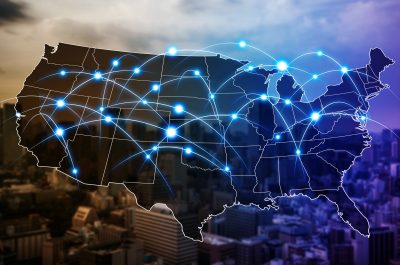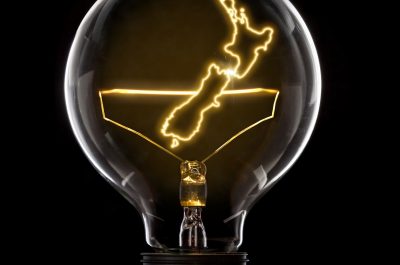Victorian Election 2022
Ahhhh election season. It’s like Christmas for political pundits. The planning, the declarations of gifts from the political parties, the one-too-many democracy sausages. And then there’s the anticipation of not quite knowing what election day will bring.
On Saturday, Victorians will head to their local polling booth to cast their vote that could see Victorian Labor Premier, Daniel Andrews returned for third term or Victorian Liberal leader, Matthew Guy become Premier.
This is not the first time Matthew Guy and Daniel Andrews have faced one another at the ballot box. Daniel Andrews won the 2018 election in a landslide victory which saw even the safest of blue–ribbon seats fall. After a brief stint on the opposition backbenches Matthew Guy re-took the leadership of the Victorian Liberal Party and the two will battle it out again for the top job.
Polls don’t lie… sort of
Push polling is getting less and less reliable. The data often favours people who have a landline phone number, are at home at 6pm – not stuck in the peak hour commute or have a mobile phone number that is publicly listed. And then there are even more variables. Do people lie? Do they answer unknown numbers? It’s hard to get a nuanced gauge from “push one for Labor, push two for Liberal.’
Focus groups are somewhat more reliable. Ten or so people often from a similar social or economic background, from marginal seats are asked leading questions from an experienced moderator. It costs political parties more, but you get a lot more valuable information. And if voters are saying something in Labor-backed focus groups – they are saying it in Liberal backed focus groups.
Make no mistake. Matthew Guy and Daniel Andrews didn’t wake up one morning and think energy policy was what is going to get them over the line. In fact, as I’ve opined previously, energy and politics make strange bedfellows, and most politicians would prefer to have energy off the political agenda all together.
But months ago, on a Zoom call or in a meeting room above a local pub during one of these focus groups, the average voter started talking about cost of living and the price of energy as their number one concern. And both leaders have had to listen.
Targets and bills
Almost all Liberal and Labor’s energy policies are framed around reducing energy costs and bringing down power bills.
Labor is still tying reduced emissions and renewable energy to clean cheaper energy (you don’t have to pay for sunshine, right?). The Liberals have stepped back a bit from that in their messaging, but still have a pledge to legislate halving emissions by 2030.
The Libs have also announced a plan to pay the household electricity supply charge for the first six months of 2023.
Labor will increase the renewable energy target to 65 per cent by 2030, and 95 per cent by 2035. It also has an emissions reduction target of 75-80 per cent by 2035, and plans to bring forward the net zero emissions target by five years to 2045.
State Electricity Commission
The Latrobe Valley is parochial, insular and it’s had its fair share of difficulties. With a retiring Nationals–turned-Independent MP, both major parties think the seat of Morwell in the heart of the Latrobe Valley is up for grabs.
Thirty years ago, the state-owned State Electricity Commission (SEC) was closed when the networks were privatised. Most of the coal generators operated by the SEC were in the Latrobe Valley and generations of people had been employed there. Now as we are planning for coal to exist the system, Labor has a plan to bring back the SEC. Even Dan Andrews’ North Face jumper which became so popular during his daily press COVID conferences has been retired for an SEC-branded one.
Labor will re-establish a government-owned energy company to build renewables and the government will hold a controlling interest in each of those projects. Labor will also use this to reach its net zero target by 2045.
Gas
The Victorian Gas for Victorians Guarantee announced by the Liberals has resonated with the electorate. Punters probably don’t understand the nuances and mechanics of it, but it’s an easy sell. The message is simply: your gas bills are going up due to supply problems, but gas companies are still exporting it overseas.
The Liberals have pledged to reserve 100 per cent of new conventional onshore natural gas for Victorian homes and businesses while maintaining the ban on fracking and coal seam gas extraction. In addition, they will establish a $1 billion Victorian Hydrogen Strategy.
Labor is still committed to household electrification as outlined in the government’s gas substitution roadmap released in July 2022. The roadmap focuses on electrification, hydrogen and biogas. But with the mercury barely nudging 18 degrees and a third summer of La Nina, it’s hard to believe that Victorians will be turning off their gas heaters anytime soon.
Electric Vehicles
Electric Vehicles are slowly moving from an unattainable luxury for the few, to a potential next car for the many.
There’s a way to go and governments are starting to pull policy levers that are likely to increase their uptake. EVs can’t just be plugged into the grid unchecked, but some investment in charging infrastructure and a bit off the ticket price will help things along their way.
The Andrews government has already funded $5 million in grants for EV charging sites across small businesses, shopping strips, and tourism hotspots.
In turn, a Guy government would launch a $50 million Community Charging Fund “to leverage co-investment with businesses and community organisations” and help create 600 new charging sites across the state.
Transmission
There’s no transition without transmission. While I’m yet to hear either leader use this phrase verbatim, the premise has sunk in.
The Western Renewables Link has received a fair amount of community backlash and criticism of the route.
The Liberals plan to change the route of the transmission line and put some big dollars behind ‘modernising’ transmission.
This is probably easier said than done. The current regulatory process means the regulatory investment test for transmission (RIT-T) requires the infrastructure to deliver the most efficient cost for the project, which is not necessarily the best route for landowners.
While state Labor’s hands are tied, federal Labor is looking at reforms to the RIT-T process and rule changes to support the roll out of its Rewiring the Nation Fund for new transmission projects.
Community Batteries
A re-elected Labor Government will invest $42 million to install 100 neighbourhood batteries across Victoria, tripling the number of homes with access to a neighbourhood battery and providing crucial extra storage capacity.
The Liberals have much the same plan. They pledge to work with communities and local government to provide at least 100 grants of up to $1 million as part Net Zero Renewable Community Projects Fund to install solar panels and big batteries.
Charged for the fight
Probably neither party thought energy would shape up to be a major election issue. But with colder than average temperatures, a war in Ukraine and spiking energy prices, it was almost out of their control.
Both parties have moved to pledge tangible and palatable commitments that largely fall within their ideological bandwidths.
The devil will be in the detail and regardless of who is victorious on Saturday, Energy Networks Australia looks forward to working with the government and energy minister.


